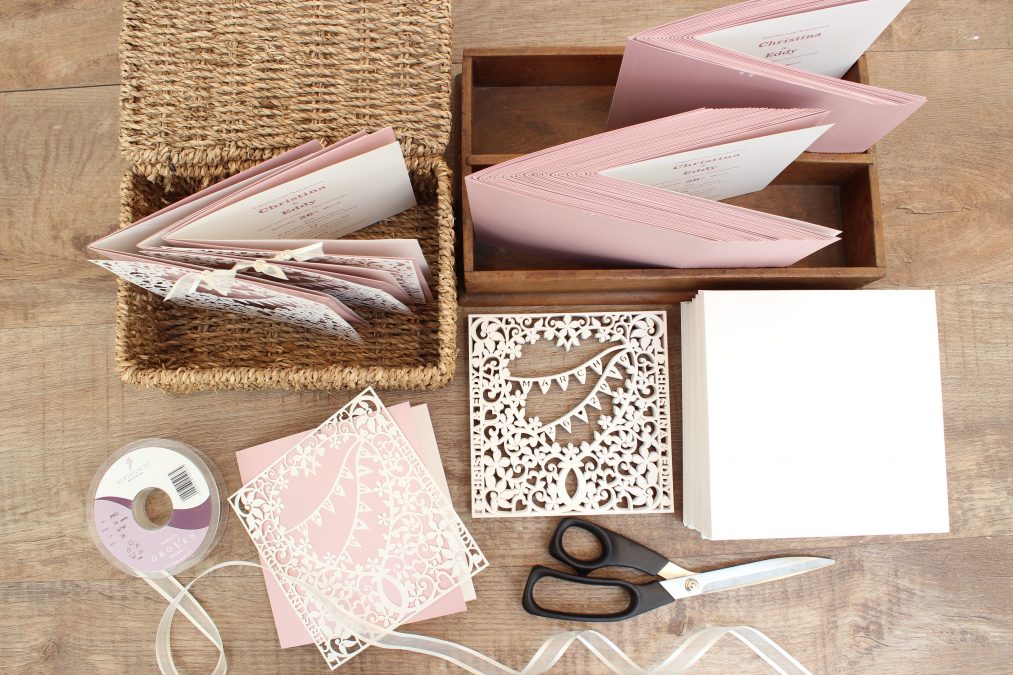
by Hanami Dream | 5, October, 2016 | #UKWedLunch
#UKWedLunch – Wednesday 5th October 2016
As well as general wedding planning chat, there’s some #toptips as well. This week’s theme is ‘wedding stationery’ #UKWedLunch
TOP TIP 1: What, when & to whom you send invite (+what it looks like) is 1st experience your guests have of your wedding #UKWedLunch
TOP TIP 2: Coordinate stationery with theme of your wedding, all stationery as a whole plus everything you do online and offline #UKWedLunch
TOP TIP 3: Order all your paper stationery at the same time to save on costs #UKWedLunch
TOP TIP 4: Budget for envelopes & stamps – the more people you invite the more postage you’ll spend #UKWedLunch
TOP TIP 5: Consider sending invites in waves to decide whether you could ‘bump up’ any evening guests to be all day guests #UKWedLunch
TOP TIP 6: specify who you are inviting to which parts of the day. Plus is there dress code, children, plus ones etc #UKWedLunch
This week’s top tips taken from Hanami Dream blog ‘You’re cordially invited…a guide to wedding stationery and how to invite your guests‘ #UKWedLunch
JOIN US EVERY WEDNESDAY! on Twitter between 1-2pm GMT
Next week’s theme is ‘to absent friends’ #UKWedLunch
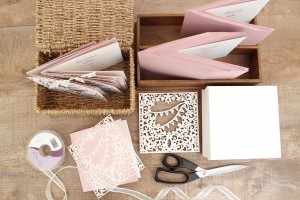
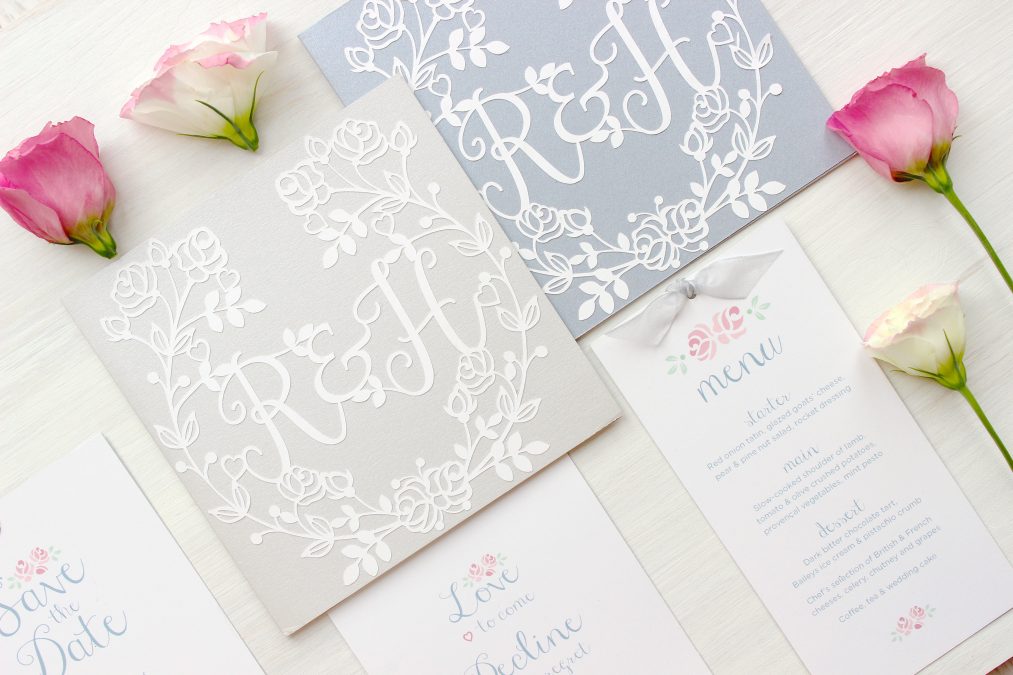
by Hanami Dream | 29, September, 2016 | blog, tips
AS FEATURED ON BRIDE MAGAZINE:
According to the infamous shampoo advert, you never get a second chance to make a first impression. Whilst you have been living and breathing all things to do with your wedding, the first time your guests may have any idea about your big day is when your wedding invitation or save the date card lands on their doormat.
Here’s my guide to planning and sending your wedding stationery to make sure that first impression counts:
why
There are many reasons why it is important to send invitations. Firstly, you want to share your good news with people and to invite them to celebrate your special day with you. Knowing how many guests are going to be at your wedding will also give you a clearer idea of the number of people to cater for and the venue size required.
But this is about more than just logistics, this important piece of mail will set the scene, the tone, the theme and your guests’ expectations of your special occasion. It also acts as way to educate and organise your guests so that they know what is expected of them too.
What you say, when you send it, to whom you address it and what it looks like all provide the first experience your guests have of your wedding. So it’s really important that you plan your stationery wisely to make the best first impression.
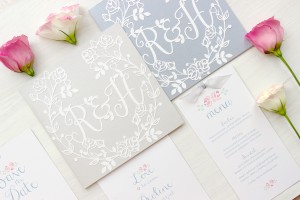 how
how
There are three different routes you could go down with your invitations – the traditional way of sending out paper stationery, the more technological (and environmentally friendly) path, or a combination of the old and new which might involve paper invites but collating the RSVPs electronically.
Whichever route you take, it’s great to
- coordinate the stationery with the theme of your wedding
- coordinate all the stationery as a whole
- ensure that you have a consistent look and feel with everything that you do online and offline
- order all your paper stationery at the same time to save on costs
- don’t forget to factor in the cost of envelopes and stamps to your budget
Bear in mind that the more people you invite, the more postage you’ll have to spend and then multiple this by how many times you send different stationery from the suite (ie save the date cards, invites, added info etc).
 what
what
Think of your wedding as a big marketing campaign – you need to consider promotion of it before, during and follow up afterwards to get the best results (and response) from your audience! A well informed guest is a happy one and communication is key so your guests don’t encounter too many unforeseen surprises that they haven’t accounted for.
Here is the full suite of paper stationery to consider. I’ve included some US trends that we are starting to see more of in the UK especially in more formal weddings (of course this list covers all types and styles of wedding day, so omit the elements that do not suit your big day):
Pre-wedding day
- Engagement announcements
- Engagement party invitations
- Be my bridesmaid / best man cards
- Hen party / stag do invitations
- Save the date cards
- Wedding invitations
- Information sheets
- Schedule of the Day
- Accommodation
- Gift list
- Map / directions
- Special requests (ie diet / high chair etc)
- Song requests
- RSVP cards
- Rehearsal dinner invitations
On the wedding day
- Order of service / Programme
- Table plan / Escort cards
- Table numbers
- Place name cards
- Menus
- Signage / labels
- Pew cards / reserved seating
- Favours
- Buffet food
- Post box
- Guest book
Post wedding day
- Thank you cards
- Cake boxes
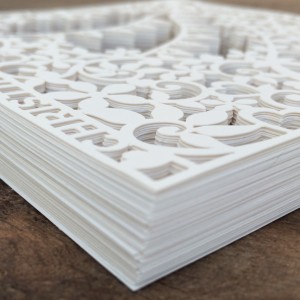 when
when
Pre-wedding day
- 10-12 months before the wedding day – send your save the date cards (or add a note in Christmas cards to save on additional postage).
- 4-6 months before the wedding day – send out the invitations (consider sending them out in waves if you want to see how many people reply positively and then decide whether you could ‘bump up’ any evening guests to be all day guests if you have some people that can’t make it). Include extra information documents to provide details of the day and give the guests details of how to contact you to confirm their attendance. Put a date on the invites to tell guests when you need to have their RSVP back to you.
- 6-8 weeks before the wedding day – check any last minute changes to your guest list and chase any outstanding RSVPs so that the table plan and place cards can be produced and you have a final number for order of services and menus for the day.
Post wedding day
- asap after the wedding day – send out wedding cake in boxes to any friends or relatives that couldn’t make the big day.
- 2 weeks-3 months after the wedding day – etiquette dictates that a you should respond to people in a polite time frame as soon as you receive their gift (or as soon as possible after your return from honeymoon) to thank people for their gifts and attendance.
 who
who
Once you’ve decided on what you’re going to send and when you are going to send it, you need to consider who the invite is going to and who it is coming from.
If your wedding day is going to be quite casual then your invitations should reflect this, whereas if it’s formal then the style and wording of the invites will be different to fit with this theme. The look and feel should mirror the content too.
There are so many variations on what you write inside the invite, as there are many factors that will influence the wording of stationery. For example, every family has different circumstances, it depends who is ‘hosting’ the wedding and often who is paying for the wedding. Here’s my advice on the elements to include which can be adjusted for all the different scenarios:
- Start the invite with who is hosting the wedding (whether this be the couple, the bride’s parent/s, groom’s parent/s, both sets of parents, or a mix of all of the above)
- Use ‘request the pleasure of your company’ (or can be more casually put like ‘please join us’)
- Write in the passive 3rd person for a more formal style
- List the bride before the groom (use bride’s first and middle names only for formal invites, plus groom’s full title)
- Include the time, date, month, year
- Indicate the venue with full address
- Note if there is a reception or meal afterwards (including when and where this will be held)
- Provide RSVP date and return address
To avoid confusion, it is often better to be really specific about who you are inviting and to which parts of the day they are invited to, so that they are not left in any doubt. Other things to note (so that all guests are on the same page) is whether there will be:
- a dress code
- children invited
- plus ones for single guests
Above all else, ensure that your invitations (and other stationery) reflect your personality and the look and feel of your special day. As long as you’ve got the important information on them (who, when, what, where) you can then add your own personal touches so that it fits your wedding day.
[Photography credits – Paper Tree Design]
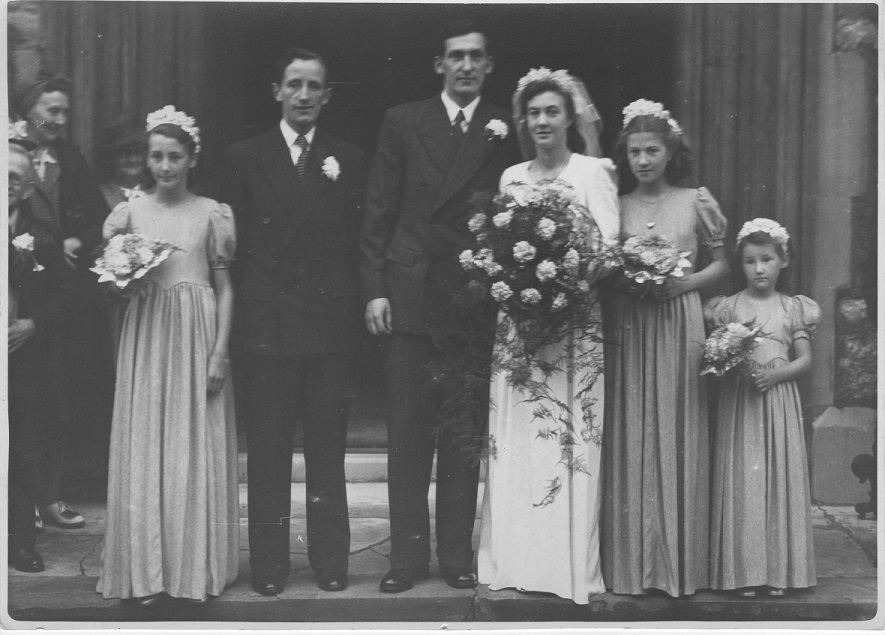
by Hanami Dream | 28, September, 2016 | #UKWedLunch
#UKWedLunch – Wednesday 28th September 2016
As well as general wedding planning chat, there’s some #toptips as well. This week’s theme is ‘Wedding Traditions’ #UKWedLunch
TOP TIP 1: Don’t forget the silver sixpence in your shoe! #UKWedLunch
TOP TIP 2: Have an anniversary dance at your wedding for all couples – present bouquet to longest married couple #UKWedLunch
TOP TIP 3: Traditionally its unlucky for the bride to wear her entire outfit before the wedding day #UKWedLunch
TOP TIP 4: Flowers conveyed hidden gestures and codes for lovers to send messages to each other #UKWedLunch
TOP TIP 5: Flowers were worn as a garland on the head as a gift of nature, to ward off evil spirits & lingering smells #UKWedLunch
TOP TIP 6: New trend of leaving a ‘lonely bouquet’ (instead of throwing it) in a public place with a note for someone else to find #UKWedLunch
This week’s top tips taken from Hanami Dream blog https://www.hanamidream.co.uk/category/traditions/ #UKWedLunch
JOIN US EVERY WEDNESDAY! on Twitter between 1-2pm GMT
Next week’s theme is ‘wedding stationery’ #UKWedLunch
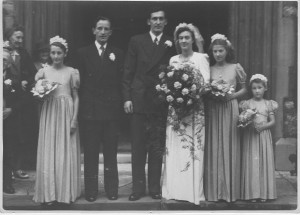
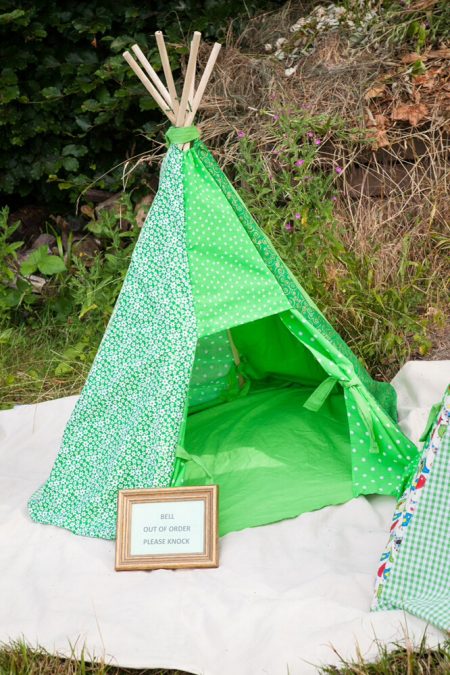
by Hanami Dream | 21, September, 2016 | #UKWedLunch
#UKWedLunch – Wednesday 21st September 2016
As well as general wedding planning chat, there’s some #toptips as well. This week’s theme is ‘Tipi Weddings’ #UKWedLunch
TOP TIP 1: Find out if the location has power & other utility services – you might need to bring in a generator, toilets and water #UKWedLunch
TOP TIP 2: The number of guests will dictate how many tipis & configuration that would work for your gathering #UKWedLunch
TOP TIP 3: If it’s cold you may need heaters. If it’s likely to rain then consider walk ways to avoid slippery grass areas. #UKWedLunch
TOP TIP 4: Think about your floor plan – dance floor, bar & seating etc. Do you want long tables & benches or round tables with chairs? #UKWedLunch
TOP TIP 5: Lighting is vital for an outside venue- to create ambience, &atmosphere plus light the way when night falls #UKWedLunch
TOP TIP 6: Everything you want inside the tipi, you need to think about and either buy, hire, make or borrow #UKWedLunch
This week’s top tips taken from Hanami Dream blog ‘A complete blank canvas: our guide to Tipi Weddings’ #UKWedLunch
JOIN US EVERY WEDNESDAY! on Twitter between 1-2pm GMT
Next week’s theme is ‘Wedding Traditions’ #UKWedLunch
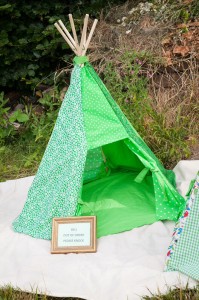

by Hanami Dream | 14, September, 2016 | #UKWedLunch
#UKWedLunch – Wednesday 14th September 2016
As well as general wedding planning chat, there’s some #toptips as well. This week’s theme is ‘How to keep your wedding guests happy’ #UKWedLunch
TOP TIP 1: Keep your guests fed, watered and entertained – get them involved & interacting #UKWedLunch
TOP TIP 2: Make it really clear in your invites who exactly is invited and to which part #UKWedLunch
TOP TIP 3: Say the same things to everyone. Don’t have different rules for different people. Or if you do, be clear why. #UKWedLunch
TOP TIP 4: Offer evening guests a flavour of the day too so they get to experience some ‘wedding’ elements in their experience. #UKWedLunch
TOP TIP 5: Make it affordable & worth their while – give them a great wedding to remember #UKWedLunch
TOP TIP 6: Let them know how much you appreciate their support and presence either with words or present #UKWedLunch
This week’s top tips taken from Hanami Dream blog ‘How to keep your wedding guests happy‘ #UKWedLunch
JOIN US EVERY WEDNESDAY! on Twitter between 1-2pm GMT
Next week’s theme is ‘Tipi Weddings’ #UKWedLunch

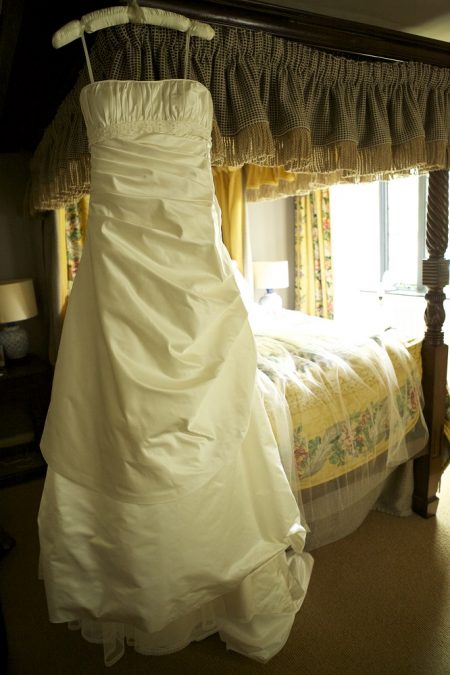
by Hanami Dream | 7, September, 2016 | #UKWedLunch
#UKWedLunch – Wednesday 7th September 2016
As well as general wedding planning chat, there’s some #toptips as well. This week’s theme is ‘Things to carry in a wedding day survival kit’ #UKWedLunch
TOP TIP 1: Buy cosmetic blotting paper to dab away any sweat or ‘shine’ on your face #UKWedLunch
TOP TIP 2: Use chalk to cover up any scuff marks on a white wedding dress #UKWedLunch
TOP TIP 3: Rescue Remedy is an amazing herbal drop to keep you calm on your big day #UKWedLunch
TOP TIP 4: Use a drinking straw so your lipstick stays in tact (and not on your glass) whilst you sip your drink #UKWedLunch
TOP TIP 5: Keep a small bottle of water on hand to make sure you don’t get dehydrated or a dry mouth when saying your vows #UKWedLunch
This week’s top tips taken from Hanami Dream blog ‘Wedding day survival kit‘ #UKWedLunch
JOIN US EVERY WEDNESDAY! on Twitter between 1-2pm GMT
Next week’s theme is ‘How to keep your wedding guests happy’ #UKWedLunch

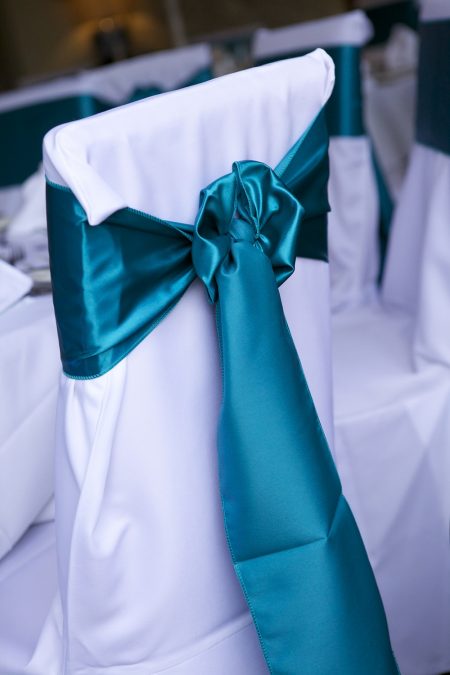
by Hanami Dream | 31, August, 2016 | #UKWedLunch
#UKWedLunch – Wednesday 31st August 2016
As well as general wedding planning chat, there’s some #toptips as well. This week’s theme is ‘How & where to seat your wedding guests’ #UKWedLunch
TOP TIP 1: Think about size, shape & style of the: space, tables & chairs at your venue. How many chairs fit round the tables? #UKWedLunch
TOP TIP 2: Etiquette suggests parents, plus chief bridesmaid & groomsman join the happy couple on a top table facing guests #UKWedLunch
TOP TIP 3: Write each guest’s name on coloured tabs & stick these on table layout until you’re happy with combination #UKWedLunch
TOP TIP 4: To mix up guests provide a bowl of numbers – people pick out their table number as they enter the reception #UKWedLunch
TOP TIP 5: Sit at a different tables for each course to mingle with all your guests #UKWedLunch
This week’s top tips taken from Hanami Dream blog ‘Excuse me, is this seat taken?…a guide to how and where to seat your wedding guests’ #UKWedLunch
JOIN US EVERY WEDNESDAY! on Twitter between 1-2pm GMT
Next week’s theme is ‘Things to carry in a wedding day survival kit’ #UKWedLunch

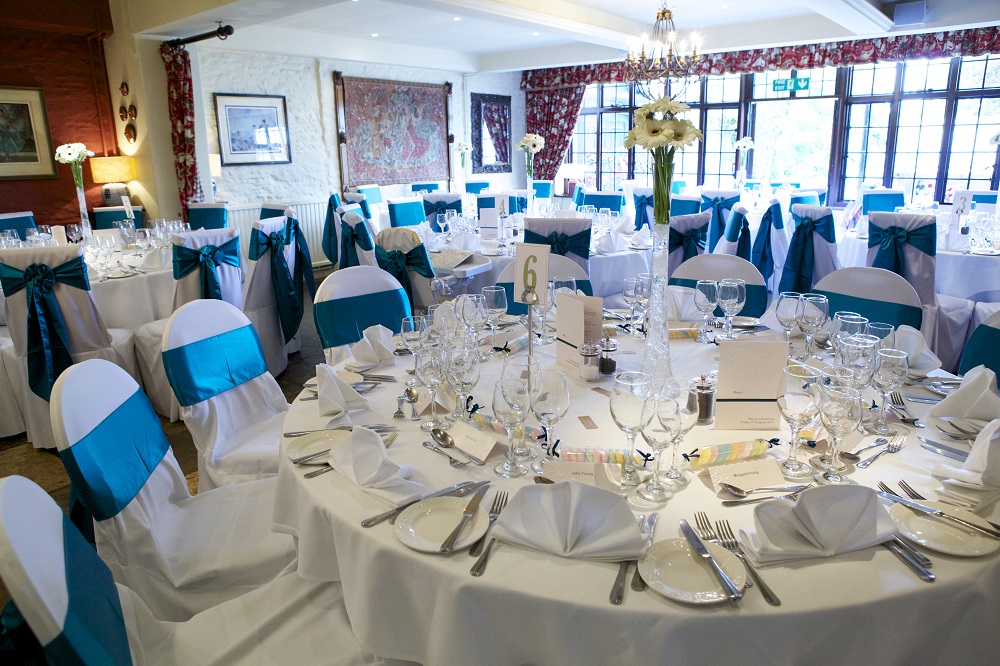
by Hanami Dream | 11, August, 2016 | blog, tips
AS FEATURED ON BRIDE MAGAZINE:
Once you’re over the hurdle of preparing your guest list and the headache of waiting (and chasing) for RSVPs, it will be time to decide where to seat your nearest and dearest for your wedding breakfast.
Take a look at our 10 point guide on how (and where) to seat your wedding guests to help you through what can be another tricky juggling act of keeping everyone happy. There’s etiquette, tradition, logistics, safety & practicalities to consider (as well as who Aunty Vera may have fallen out with) so that all can see and been seen by the bridal party.
1) size and shape
Firstly, establish what is possible at your venue. What could you fit in to the room? What is already available there? You need to think about the space, tables and chairs. Taking in to account the size, shape and style of these three elements. Count the number of tables and determine how many chairs can fit around the different shapes of table. This amount should accommodate your final guest numbers.
2) style of meal
How you lay out the tables can be dictated by the style of food that you will be serving. For example, if you’re having a casual meal or buffet then you may opt for guests to pick their own places when they’ve got their food rather than a formal sit down meal where everyone has an allocated place setting. To get guests to mix up, you could provide a bowl of numbers and people pick out their table number as they enter the reception.
3) structure
The formation of the tables will depend on their shape and the atmosphere you want to create. Family style sharing meals work well on rectangle banquet tables with benches on either side. Laying long tables in a horseshoe or T shape creates a focal point of the bridal party. Whilst round tables surrounded by chairs can cluster groups together for good interaction. Square tables give a great modern feel and don’t feel restricted to use a uniform type of table – mix and match shapes and sizes to suit your needs.
4) standard
Traditionally there is a head (or top) table containing at least the happy couple. In addition, etiquette suggests their parents, along with chief bridesmaid and groomsman join this long table facing the guests so that everyone can view the top table (eg Chief Bridesmaid, Groom’s Father, Bride’s Mother, Groom, Bride, Bride’s Father, Groom’s Mother, Best Man). Working away from this focal point, others from the wedding party are grouped near to the top table, followed by closest relatives, then friends, and finally colleagues.
5) substitutes
Let’s face it, you can have whoever you want on the top table (or no top table at all!) Nowadays there are many alternative schemes to factor in different family circumstances and partnerships. The top table could be round rather than rectangle so the wedding party get to chat too. The top table could just contain the two most important members of the day whilst the rest of the bridal party host their own family members on separate tables. Sometimes brides and grooms choose to sit at a different table for each course to mingle with all their guests.
 6) special considerations
6) special considerations
As well as knowing how many people you’re seating, you’ll need to factor in any accessibility requirements for any young, elderly or incapacitated guests such as incorporating requests for highchairs. People with any tasks to carry out during the meal or speeches should be able to get out of their place easily too. There’s always a temptation to match make with a singles table, though my advice would always be to keep people with people they already know (and like). Tradition suggests alternating men and women around a table.
7) system
How to plan who sits where is a fine and delicate art often thrown by last minute cancellations and feuds. There are lots of online planning tools, apps and software available to help solve this issue. However, nothing beats a large piece of paper containing the floor plan of your room with blank tables drawn in the right places. Then get some small coloured sticky tabs in perhaps three colours (for men, women and children). Write each guest’s name on the relevant coloured tab and stick these around the table templates until you’re happy with the seating combinations.
8) selecting tables
There are many options and ways to personalise your tables including the names you give each table or how you number them. One of my favourites at the moment is showing a picture of both of the happy couple at the age that the table number corresponds with.
9) seating plan
There a couple of options to ensure that guests get to the table you’ve allocated to them. Firstly, you can display a seating plans of the different tables listing which guests are sat at each table. Ideally have a couple of these plans to avoid everyone bunching around one and placing it outside of the room for people to view it ahead of time to avoid a rush on entry. Alternatively, escort cards can be displayed (perhaps alphabetically) which each contain the name of a guest along with the table name/number where they are to be seated. In both scenarios, place name cards on the table can show guests where to sit or they could pick their own seat.
10) seating at ceremonies
It’s not just the reception to consider but you may want to offer a modern take on where people sit at the ceremony too. Traditionally in a religious building, the Bride’s family sit on the left of the premises and the Groom’s sit on the right. However, many people are asking their guests to pick a seat not a side. Plus if the venue is less formal you can move away from rows of chairs and opt for a circle around the couple or even a spiral of chairs working inwards to the couple.
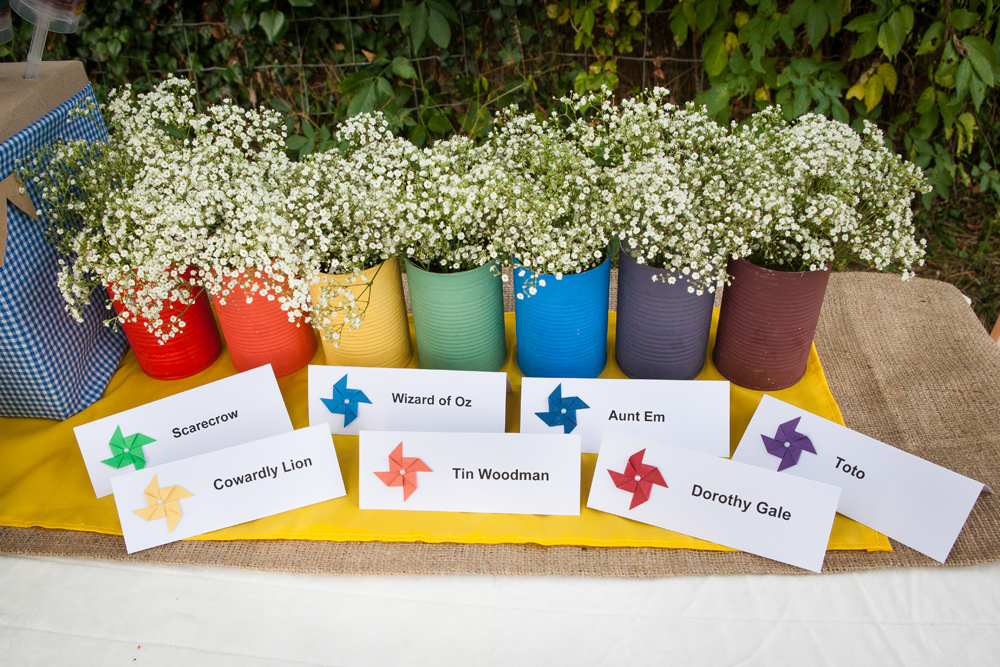

by Hanami Dream | 19, July, 2016 | blog, tips
If your big day is just around the corner, you may be getting down to the nitty gritty of confirming all the final numbers with the caterer and venue, finishing off making favours, as well as starting the wonderful part of beautifying yourself in preparation for the big day.
Even if you’re armed with the best schedule in the world (my forte by the way!) there are always a few minor things that crop up on the day that you can’t prevent or avoid. However, you can be prepared and plan for some eventualities.

Here is Hanami Dream’s wedding day survival kit list for brides and grooms. It is not an exhaustive list but contains some items that I have found to be useful to carry (or better still get one of your trusty attendants to) on your wedding day to combat any little hiccups.
- Blotting paper – dab away any sweat or ‘shine’ on your face
- Chalk – to cover up any scuff marks on a white wedding dress
- Double sided tape – to avoid any ‘wardrobe malfunctions’
- Floss – to keep your smile looking at it’s best for all those pictures
- Foot insoles – to save your feet for all that dancing
- Hair bands, comb & pins – anything to keep your ‘do’ under control during the day
- Mints – for fresh breath for the first kiss (as well all the meet and greats)
- Nail file – to get rid of any snags
- Nail vanish – clear polish is good for stopping pulls in your tights turning in to ladders
- Paracetamol – light pain relief so you don’t have a headache for your first night together
- Plasters – in case of blisters from your amazing wedding shoes
- Rescue remedy – amazing herbal drops to keep you calm
- Safety pins – in case anything comes undone
- Sewing kit – for minor repairs like sewing on buttons
- Straws – so your lipstick stays in tact (and not on your glass) whilst you sip your drink
- Tissues – for dabbing away tears (hopefully of joy!)
- Tweezers – to get rid of any stray hairs
- Water – a small bottle on hand will make sure you don’t get dehydrated or a dry mouth when saying your vows
- Wet wipes – to freshen up during the day!
There are plenty of pre-made kits on the market that you can buy to fulfil the need for an emergency kit. However it’s lots of fun to pick and pack your own things that are personal and relevant for you and your big day. Perhaps you could prepare some for your bridal party or maybe your bridesmaids might assemble one for you.
What would you add to this list? I’d love to hear any of your suggestions (in the comments below) for items you’d have in your wedding survival kit.

by Hanami Dream | 2, June, 2016 | blog, holy trinity of wedding planning, tips
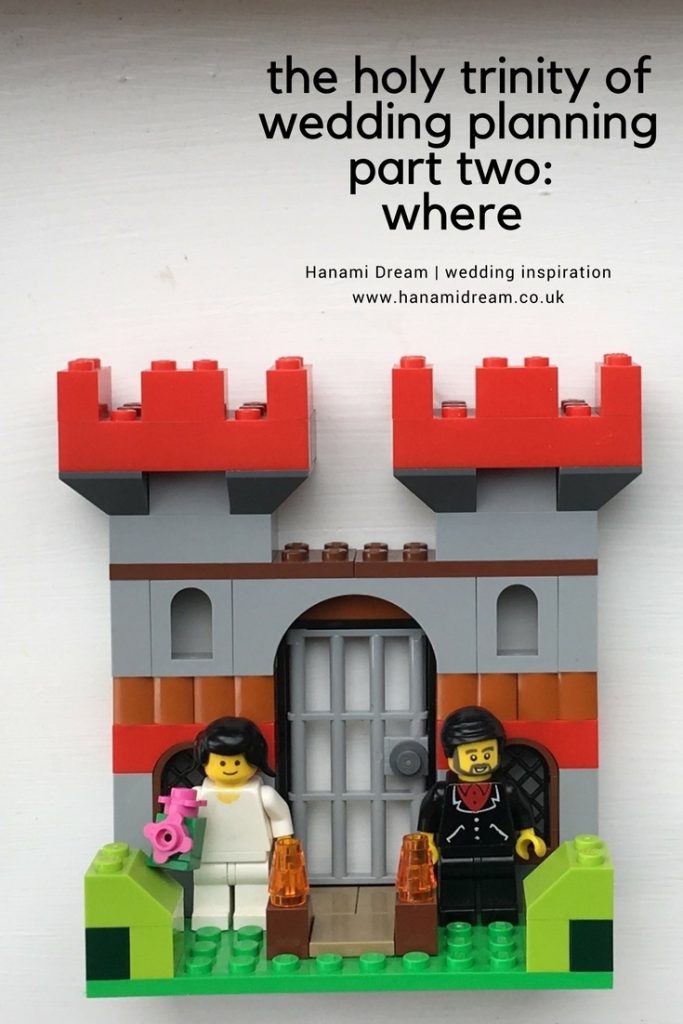 So far in the series, I’ve introduced the three key aspects of planning a wedding that pretty much affect every other thing that is connected with your big day. These are who, where and how much (otherwise known as your guests, venue and budget). This group of three things are very much intertwined. Plus when you hold your wedding is connected too! As previously covered (in the who post), nearly all the decisions you have to make about your wedding will come back to one, two or all of the elements in what I class as ‘the holy trinity of wedding planning’.
So far in the series, I’ve introduced the three key aspects of planning a wedding that pretty much affect every other thing that is connected with your big day. These are who, where and how much (otherwise known as your guests, venue and budget). This group of three things are very much intertwined. Plus when you hold your wedding is connected too! As previously covered (in the who post), nearly all the decisions you have to make about your wedding will come back to one, two or all of the elements in what I class as ‘the holy trinity of wedding planning’.
This month I’m going to tackle the where element and your all-important choice of venue (and will look at the last element in the trinity of how much another time).

Finding the right venue that is available at the right time, for the right price, for the right number of guests will be one of the first (and trickiest) parts of planning your wedding. But once you’ve decided on this element everything else will seem like a doddle! Before venue hunting, have a rough idea of your budget and how many guests you want to share the day with you. (I told you that the where, who and how much elements would come in to play.) And have an idea of when you want it to take place too. See my top tips below to give you an idea of some other factors to help you decide the place where you’ll say ‘I do’.
Nowadays, the world is pretty much your oyster in terms of options available. If you’ve seen ‘Don’t Tell the Bride’, you’ll realise that you can get married in all types of places!
1.Where in the world
Maybe you don’t fancy risking the British weather and want to get married outside of the UK, to jet off or elope. Destination weddings are certainly an attractive proposition and usually mean that all the details get handled for you by the hotel where you are staying. Plus you get your honeymoon and wedding all rolled in to one.
However, it’s worth considering that going abroad could limit who can come to the wedding (here’s the trinity coming in to play again) as not everyone will be able to afford to attend or elderly relatives may not be well enough to travel. Plus, just remember that whoever does come will be with you for your honeymoon too! Guests would have to factor in more time to attend the wedding, so the time of year that you have your wedding may also affect whether they could come.
Before booking your tickets, you should also check the legalities of your chosen country as it may be more hassle than it’s worth to be legally wed in that country (translating of documents, time and effort etc) so you may chose to do the legal bit at home before or after the glamourous beach part. (Don’t forget to make sure your passport matches the name you are travelling under – it might be best to travel under your maiden name unless there is time to get your passport changed before you travel. (See my checklist of other documents and organisations to tell about your change of name.)
2.Pinpoint the location
Once you’ve decided on whether you’re getting married home or abroad, then you need to narrow down the location and think about:
- Which country?
- Which region?
- Which town?
- Will it be in or out of town?
- Would the venue be easy to find?
All these factors will impact on travel costs and timings. Guests will need to consider whether they need to factor in overnight accommodation as well. Plus if your wedding is not near where you live you may not be able to visit the venue many times before the big day or meet with suppliers face to face to view products in advance.
Think about how far away the ceremony venue is from the reception venue in terms of distance but also timings. Depending on what time of day you’re getting married it may conflict with rush hour or school runs that could affect traffic and people travelling between locations.
Wherever you get married, if you are having a Church of England wedding ceremony, your Banns (an announcement of your intention to marry) need to be read in the parish where each of you lives as well as the church where you will be getting married (if this is somewhere different). So if you plan to attend the reading of your Banns, it might be harder if you have to travel far.
 3.Formalities
3.Formalities
What kind of day do you want? Perhaps you’ve already got your Pinterest boards at the ready (goodness knows how we ever planned anything before Pinterest!) If not, how do you envisage your wedding day? The style of wedding that you want will influence the venue you choose so think about whether you want something that is:
- All in one venue?
- Big or small?
- Relaxed or formal?
- Inside or outside?
- Urban or rural or coastal?
- Unique or package?
- Adults only or child friendly?
- Organised for you or somewhere you can bring together your own group of suppliers?
- What kind of theme do you want?
- Vintage
- Rustic
- Glamourous
- Country garden
- Festival
- Tropical
- Medieval
- Carnival
- etc etc
4.Legally speaking
You could have a religious or civil ceremony, or perhaps have a blessing in an amazing off-the-beaten track location and do the legal bit at another time. According to the Citizens Advice Bureau in the UK, at the moment you can legally get married in the following places:
- a Register Office
- premises approved by the local authority such as a hotel
- a church of the Church of England, Church in Wales, Church of Ireland, Presbyterian or Roman Catholic Church in N. Ireland (opposite sex couples only)
- a synagogue or any other private place if both partners are Jewish
- a Meeting House if one or both partners are either members of the Society of Friends (Quakers) or are associated with the Society by attending meetings
- any registered religious building (England and Wales only)
- the home of one of the partners if the partner is housebound or detained, for example, in prison
- a place where one partner is seriously ill and not expected to recover, for example, in hospital
- a licensed naval, military or air force chapel
In addition, owners of premises that are regularly open to the public (ie stately homes, hotels and civic buildings) can apply to hold civil marriages. Generally these places need to be in a permanent built structure and not an open air venue. So it’s worth checking with your dream venue to check if you could get legally married there.
 5.Location, location, location
5.Location, location, location
Whether you’re having a one-stop venue, or having the legal part somewhere else, you’ll want to have somewhere you can relax, eat and have fun with your guests after the ceremony. There are lots of different types of venues to chose from for your wedding reception including:
- Aquarium
- Barn
- Beach
- Castle
- Gallery
- Historic venues
- Hotel
- Landmark venues
- Library
- Marquee style – see my guide to a tipi wedding
- Museum
- Outdoors
- Own home
- Pub
- Restaurant
- Sporting venues
- Stately home
- Zoo
How far in advance you’re planning might open up more possibilities and how much you have to spend will offer different options. Plus the number of guests will complete the trinity of factors that will influence where you pick.
See my list of Top 20 venues in and around Oxfordshire and the Cotswolds for some local venue inspiration.
6.Size does matter
With your trusty (and let’s be honest probably controversial and stress inducing) guest list at the ready, you’ll be able to determine what size of venue you need. Other things to think about with your guests include:
- Will you be feeding all the guests?
- Will it be a sit down meal or buffet? (If you want to all be sat around tables that could change the number of people you can fit in a room versus if people are stood mingling around.)
- Will you be having all the guests for the whole day? Or will you have some for the meal and some will come in addition later for the evening?
The size of the venue will influence how many guests you can invite but you could increase the numbers by having an evening section that doesn’t require everyone to be sat down to eat.
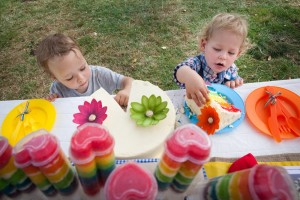 7.Icing on the cake
7.Icing on the cake
So what’s really important to you? What are the things you won’t compromise on – those things that your wedding venue must have to make your wedding perfect?
- Do you require parking? How much parking is required?
- What facilities are important to you?
- Do you need disabled access?
- How many rooms will you need?
- What size of rooms are available?
- Are there separate rooms for getting ready beforehand?
- Is there a space for children or for elderly to escape the main area?
- Will yours be the only wedding at that venue on the day?
- Is there accommodation at the venue?
What facilities or factors are on your non-negotiable list?
8.The fine detail
They’re probably not deal breakers, but there may be a few minor points that could sway your decision or would give a different day depending on the decisions by individual venues about their policies on:
- Confetti
- Candles
- Marquees
- Fireworks
- Helicopters
- Music switch off time
- Enough power
- Use of your own suppliers
- License for alcohol
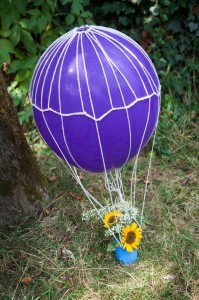 Picking your venue may be time consuming but the effort will be worth it as the venue is probably the most expensive element of the day, so you want it to be right. Once you’ve sorted the venue (and set the date) then you can start planning all the other finer details. With the who, where and how much at the fore front of your mind, everything else can fall in to place.
Picking your venue may be time consuming but the effort will be worth it as the venue is probably the most expensive element of the day, so you want it to be right. Once you’ve sorted the venue (and set the date) then you can start planning all the other finer details. With the who, where and how much at the fore front of your mind, everything else can fall in to place.
More about the money side of things soon in the last element of the holy trinity of wedding planning: how much.




 how
how when
when who
who











 So far in the series, I’ve introduced the three key aspects of planning a wedding that pretty much affect every other thing that is connected with your big day. These are who, where and how much (otherwise known as your guests, venue and budget). This group of three things are very much intertwined. Plus
So far in the series, I’ve introduced the three key aspects of planning a wedding that pretty much affect every other thing that is connected with your big day. These are who, where and how much (otherwise known as your guests, venue and budget). This group of three things are very much intertwined. Plus  3.Formalities
3.Formalities 5.Location, location, location
5.Location, location, location  7.Icing on the cake
7.Icing on the cake Picking your venue may be time consuming but the effort will be worth it as the venue is probably the most expensive element of the day, so you want it to be right. Once you’ve sorted the venue (and
Picking your venue may be time consuming but the effort will be worth it as the venue is probably the most expensive element of the day, so you want it to be right. Once you’ve sorted the venue (and 